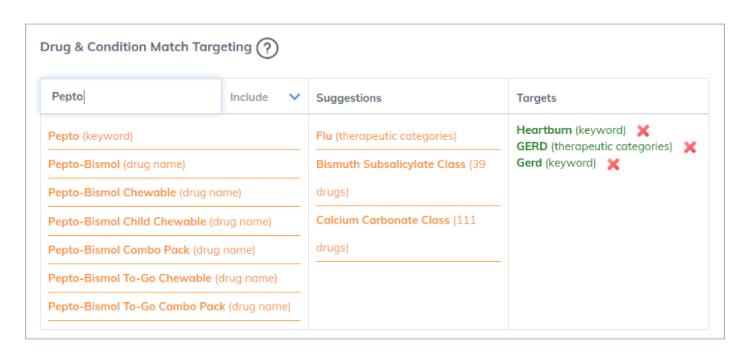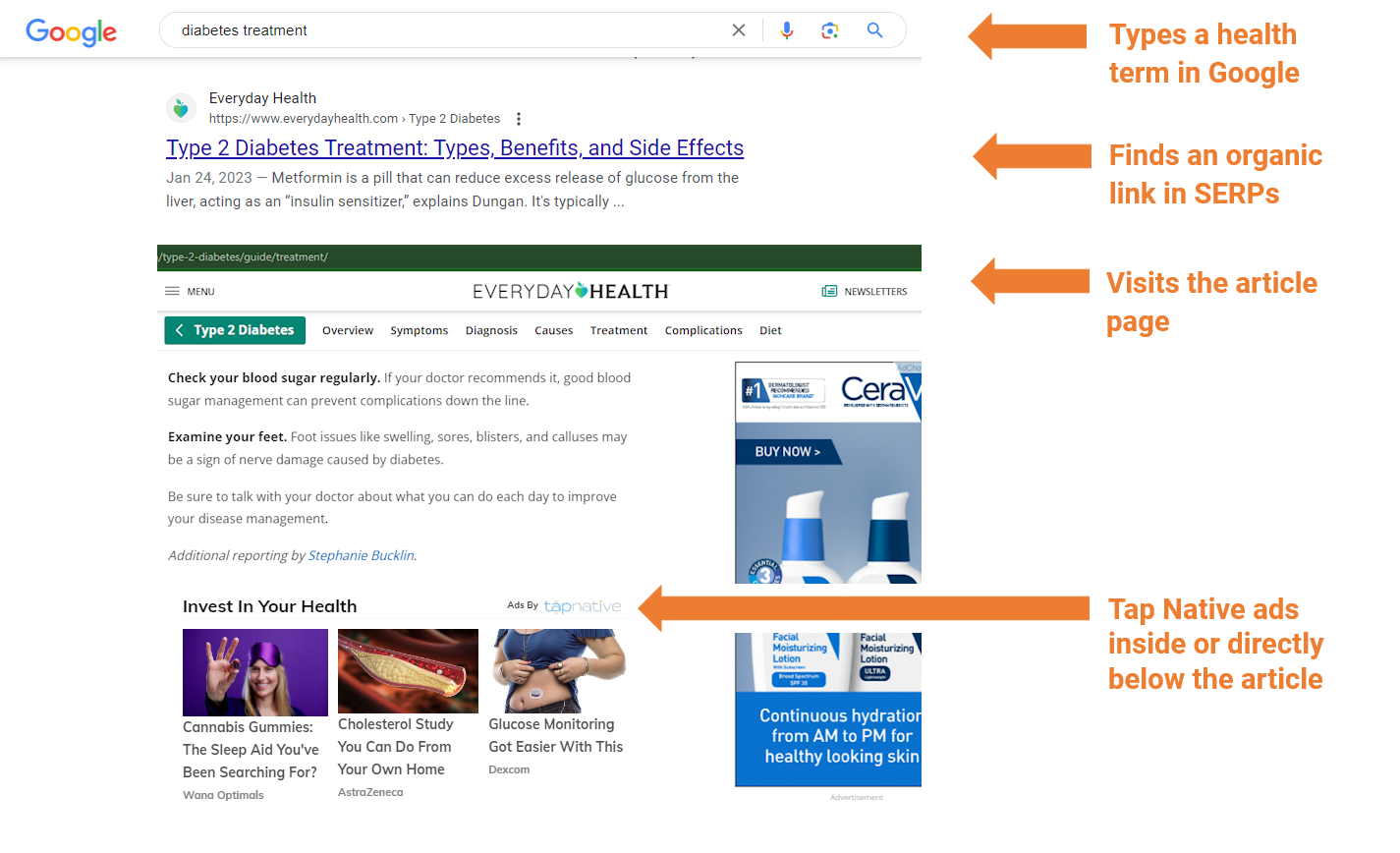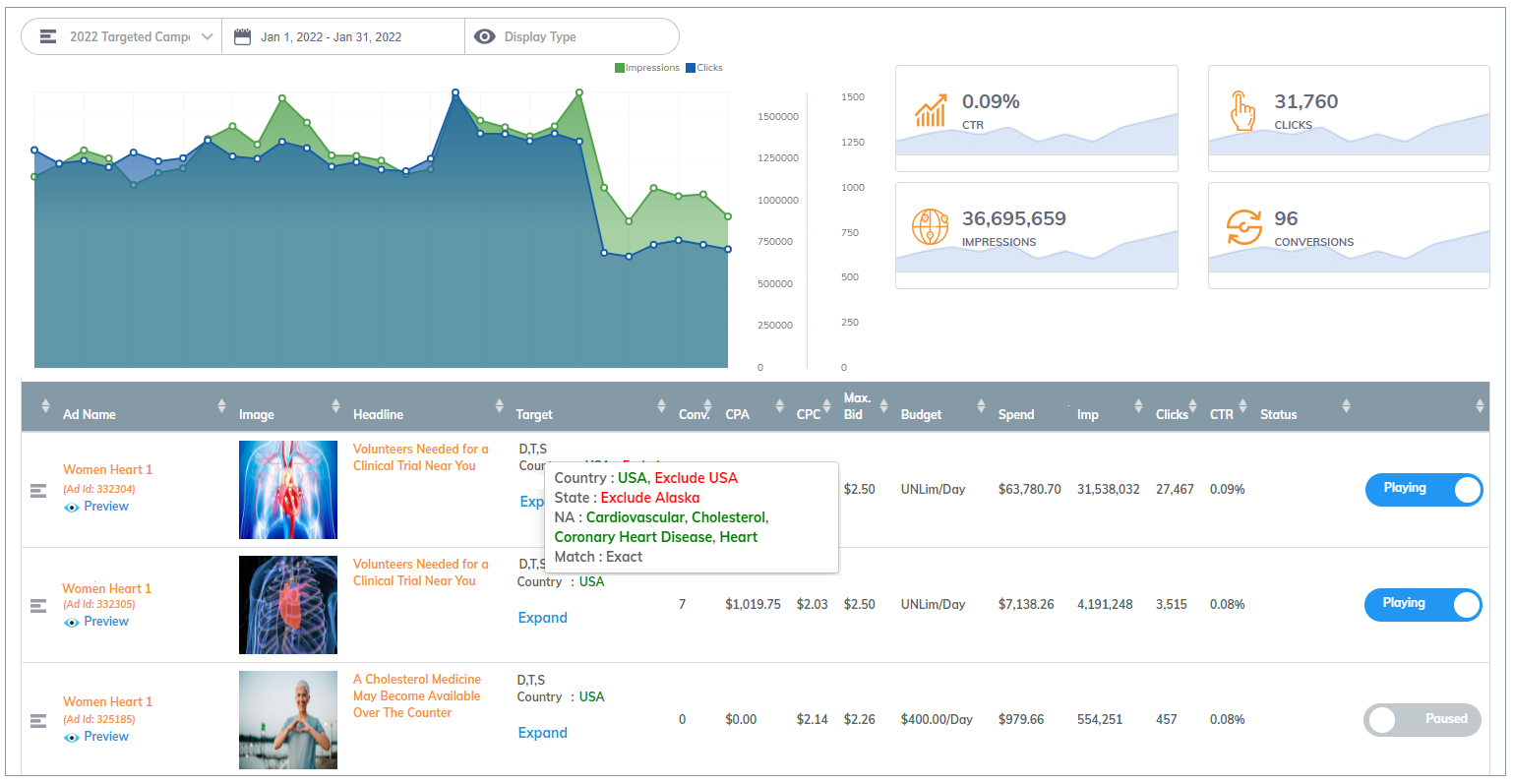Healthcare marketers including pharma, device and service providers face a significant shift in the way they reach and engage with their audiences. We all know Google is already phasing out third-party cookies so the traditional methods of targeting and personalization using 3rd party segments are being sunset. Understanding the nuances of contextual targeting has become paramount for healthcare marketers. In the beginning of the web using a keyword like diabetes was a way to reach diabetic patients but the word diabetes appears in tens of thousands of pages that have nothing to do with diabetes care or diabetes treatments so using it as a keyword to trigger an ad is not a smart way to reach in-market diabetic patients.
When used properly, contextual marketing emerges as a uniquely powerful solution for healthcare marketers. Contextual targeting allows marketers to deliver highly relevant ads to pages with very precise content where readers are extremely likely to be seeking specific answers to their important health questions and also be in-market for solutions and therefore have very high intent. This personalized approach ensures that healthcare messages are delivered to the right audience in the right environment catching would be patients in the right frame of mind and therefore maximizing the impact of marketing campaigns.
Niche and Sensitive Targeting: The pharmaceutical and healthcare industry often requires specialized and sensitive targeting. Contextual targeting offers a unique advantage by enabling marketers to focus on specific topics, such as diseases, treatment options, or health-related content. This precision targeting ensures that advertisements are displayed in relevant contexts, providing valuable information to users when they are actively seeking it.
Best Practices for Contextual Targeting
To effectively leverage contextual targeting, healthcare marketers should Identify keywords that align with their target audience's interests, demographics and which indicate high user intent. In the case of diabetes drug marketers, using the term diabetes with 1 other keyword trigger such as Insulin, glucose, Metformin, Januvia, Sulfonylureas, DPP-4 Inhibitors, Thiazolidinediones and many other high intent keywords ensures the pages where your ad appears are high value catering to readers whose intent is far higher than a pages with a single keyword mention. Tap Native makes available over 200 pre-set therapeutic category targets which are already set with dozens of high value keywords which ensure the reader’s high intent. In addition, Tap Native’s Drug and Condition Match Targeting system is a health centric relational database which offers suggestions for unearthing terms such as drug names, drug classes and other high value terms which can trigger your ad on pages with high value, high intent audiences.

Health sites and health sections are like public libraries. Its not often that we visit the public library but when we do, we usually come for a specific reason. It’s the same thing with health and medical sites. Visitors usually arrive via SERP and are in-market to get answers to personal health questions. Health sites as opposed to social media sites, news sites, reference sites etc. are quiet places where visitors are laser focused on getting answers which make them ideal environments for reaching users with the highest intent. Tap Native ads appear on hundreds of health and medical sites like Everydayhealth.com, WebMD.com, Healthday.com, Sharecare.com and Drugs.com.
Once you have targets, the question becomes branded banners or content marketing? Branded banners can be effective at creating mid- and long-term lift in brand awareness but banner blindness has consistently grown. Banner blindness is the phenomenon where web users consciously or subconsciously ignore banner ads. Research and studies have shown that banner blindness is widespread. For example, a study published in the Journal of the American Society for Information Science and Technology found that users tend to ignore banner-like elements on web pages, with less than 20% of participants fixating on banner-like ads during their browsing sessions. This means viewability stats are not indicative of actual viewership. Another study conducted by the Nielsen Norman Group revealed that users typically focus more on the editorial content relevant to their goals, often overlooking banner ads. Eye-tracking studies have consistently demonstrated that users' attention is primarily directed towards the main content of a webpage, while banners and other forms of display advertising receive relatively little attention. This is why Tap Native ads are integrated directly into the content of the page, why they are unbranded and designed to look like content. Tap Native ads are always properly disclosed but because of their content style formats and placements, they have engagement rates as much as 20X that of typical banner ads.

Continuous refinement of ads is key. Create mutiple ads with different images, headlines and contextual targets to see how each preform against one another. Pause ads with low engagement and conversion rates and iterate on ads with high engagement and conversion rates. Tap Native’s DTC Marketing dashboard reports ad impressions, clicks, CTR, average cost per click, conversions and average cost per conversion. This data makes optimizing campaigns scientific, not subjective.

For cautious or highly regulated markets, like pharma, it’s becoming much easier to get approval to run native ads. To get the green light, marketers should focus on 5 key areas.
- Trust & Education - Educating a patient or HCP has always been the primary goal of any healthcare org’s marketing efforts. Emphasize trust within editorial content and continued discovery for chronic patients eager to learn more, especially after having just finished an article or video on a specific health topic.
- Overcoming Banner Resistance - Native ads are ideal at reaching and engaging consumer and HCP audiences that have been overmarketed to and developed banner resistance. It’s clear that audiences prefer learning about products through content vehicles, rather than traditional banner advertising. By dipping your toe into native advertising, you will be tapping a new group of users that you may not have interacted with before.
- Time Tested Legal Compliance - Native ads have been main-stream for over 13 years now. Native ad units have been acknowledged by and are compliant with FTC advertising guidelines. Native ads DO properly and prominently disclose that the ad or block of ads are paid for by an advertiser. Pharma’s version of the native ad is nearly identical to a “help-seeking ad” because the ad calls out a specific condition but does not mention a brand and therefore is not required to carry ISI disclosures. The brand is discovered by the user further down the journey of discovery.
- Simple & Inexpensive Creative- Most native ads are simple to create. They are composed of an image, a headline, a source name such as a product or company name, and a landing page URL. These 4 assets can be assembled fast and approved far more quickly and inexpensively than “banner creative” and iterations are a snap.
- Performance pricing, measurability, and CPA focused results - Native ads are the preferred vehicle for CPA focused healthcare marketers. They are usually priced on a cost per click (CPC) basis and don’t require large financial commitments. Native advertising is truly about measuring highly scalable traffic and understanding how downstream visitors behave. You’ll be able to see metrics which provide demonstrable, not nebulous, value to your org’s educational objectives and sales funnel. You can use conversion pixels to track sales, lead form fills, videos watched, registrations, CME courses completed, discount cards downloaded or other trackable CPA/ROI focused metrics.
Remind those holding the purse strings how much time and money your org spends on CPM priced banner ads. Remind yourself and your colleagues that somewhere in a galaxy, not that far away, there exists the real possibility that you’ll “crack the code” and discover a better way to reach and engage your target audience using context and environment, not cookies. If we can help get you started, just ask.
